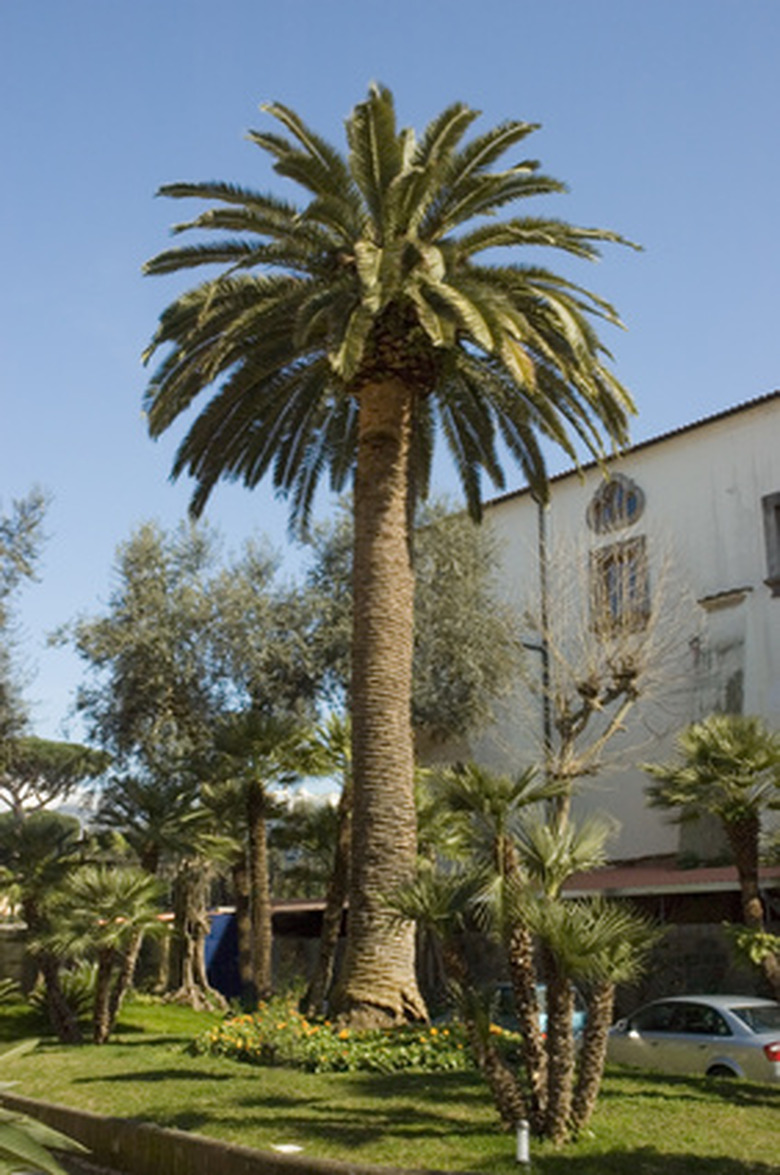Different Types Of Zoysia Grass
Zoysia grasses are warm weather grasses native to East and Southeast Asia. Zoysia spreads horizontally by stems both above and below ground. It turns brown after the first hard frost, but is the first grass to turn green in the spring. It is used for lawns, parks, playing fields and golf courses.
Japanese
Japanese Zoysia grass, Zoysia japanonica, has a coarse texture that resembles tall fescue. Its hairy, light-green leaves grow faster than other Zoysia grass, and it tolerates the cold well. It is the only cultivar that can be grown from seeds, but is subject to damage by the hunting billbug and nematode.
- Zoysia grasses are warm weather grasses native to East and Southeast Asia.
- Japanese Zoysia grass, Zoysia japanonica, has a coarse texture that resembles tall fescue.
Mascarene
Mascarene Zoysia grass, Zoysia tenuifolia, has a short, fine leaves and forms a fluffy, dense turf–but it can't stand the cold. It was introduced to the U.S. from the Mascarene Islands in the Indian Ocean and is often used as a low-growing ground cover in southern California.
Meyer
Meyer Zoysia grass, Zoysia japonica 'Meyer,' released in 1951, is a hybrid of Zoysia japonica. It has dark green leaves with a medium texture. It tolerates cold better than any other zoysia grass.
Manila
Manila zoysia grass, is also called Mantrella zoysia grass. Brought to the U.S. from the Philippines in 1911, Manila grows slowly and produces a lawn that is denser than Zoysia japonica cultivars. It is less cold tolerant than the Japonica cultivars and appears to be susceptible to infestation by nematodes. The texture of its leaves is finer than Meyer Zoysia grass–and it needs more sun than Emerald. It is recommended for high-maintenance, high-quality lawns where slow growth is not an issue.
- Mascarene Zoysia grass, Zoysia tenuifolia, has a short, fine leaves and forms a fluffy, dense turf–but it can't stand the cold.
- The texture of its leaves is finer than Meyer Zoysia grass–and it needs more sun than Emerald.
Emerald
A hybrid between Zoysia japonica and Zoysia tenuifolia, Emerald Zoysia grass was introduced by the USDA in 1955. A beautiful zoysia grass, Emerald has the fine texture of japonica and the density of tenuifolia–and grows faster than either.
Belaire
Developed in Maryland and released by the USDA in 1985, Belaire zoysia grass is an improved cultivar of japonica. It is medium-green in color and tolerates cold well. Its leaves are more coarse than Meyer and it grows faster.
El Toro
Another improvement of japonica, El Toro Zoysia grass was developed in California and released in 1986. It looks like Meyer Zoysia grass but grows faster, has a better color in cool temperatures and accumulates less thatch. It turns green early in the spring.
- A hybrid between Zoysia japonica and Zoysia tenuifolia, Emerald Zoysia grass was introduced by the USDA in 1955.
- It looks like Meyer Zoysia grass but grows faster, has a better color in cool temperatures and accumulates less thatch.
Cashmere
Pursley Turf Farms in St. Petersburg, Florida, released Cashmere Zoysia grass in 1988. Cashmere has a similar color, density and texture as Emerald, but feels less brittle and stiff. Pursley Turf recommends that Cashmere be grown in soil containing rock, sand, clay, marl or shell.
Diamond
In 1996, Texas A & M University released Diamond, a dark green cultivar with a fine texture. It tolerates shade and can be mowed at less than ½ inch, but it is highly susceptible to tropical webworms.
Zeon
Also in 1996, Texas A & M released Zeon, a medium-fine, dense, dark-green cultivar that can tolerate shade and resist drought.
Zorro
In 2001, Texas A & M release Zorro, a cultivar of mantrella. Zorro is dense, dark green, with a fine texture. It tolerates shade well and is less susceptible to brown patch and dollar spot.
- Pursley Turf Farms in St. Petersburg, Florida, released Cashmere Zoysia grass in 1988.
- Also in 1996, Texas A & M released Zeon, a medium-fine, dense, dark-green cultivar that can tolerate shade and resist drought.
